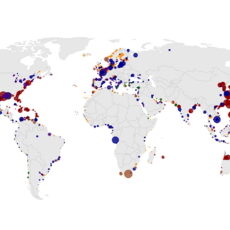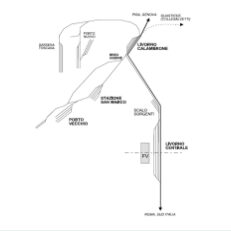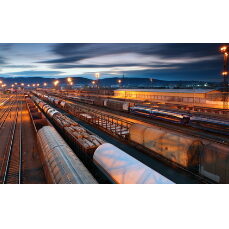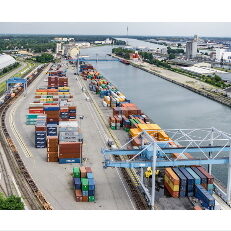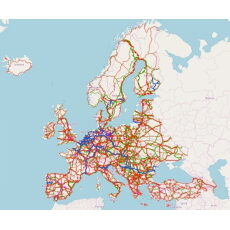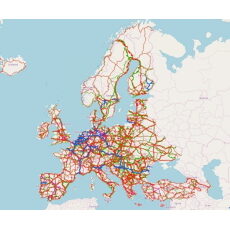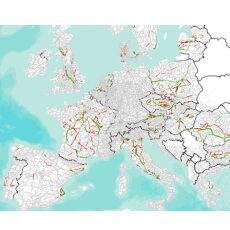- All
- African projects
- assessment
- assessment selected projects
- Assessment selected projects 2
- Assessment selected projects 3
- Assessment selected projects 4
- ASTRA
- Cost Benefit Analysis
- Electric mobility and ITS
- MOMOS
- planning
- planning selected projects
- planning selected projects 2
- planning selected projects 3
- planning selected projects 4
- planning selected projects 5
- projects
- Railways projects
- research
- research selected projects
- research selected projects 2
- research selected projects 3
- studies
- studies selected projects 1
- studies selected projects 2
- studies selected projects 3
- studies selected projects 4
- studies selected projects 5
- TRTingegneria
- TRUST
- urban mobility
- Study on cross-border investment needs and climate adaptation of the TEN-T network The effective implementation of the TEN-T policy, with the completion of the core network and the extended network by 2030 and 2040, is key to creating a competitive industry, expanding the labour market, promoting growth and jobs and improve the daily lives of European citizens. It is therefore important to ensure sufficient investment for the completion of the TEN-T network. While it is important to complete the TEN-T, it is equally important to ensure that the infrastructure resists the threats of extreme events resulting from climate change, which will continue to increase in frequency, intensity, duration and spatial extent in the coming decades. The objectives of this study are: 1) identify the investments necessary to make the TEN-T resilient to climate change, 2) identify the investments necessary to remove the cross-border bottlenecks of the TEN-T and ensure its completion. In the study conducted together with M-FIVE (DE), VUB (BE) and ISL (DE), TRT is responsible for: Analyse and quantify the investments necessary for the completion of the TEN-T network until 2040, with particular focus on 43 cross-border projects and 33 national projects. Carry out an assessment of the economic and transport impacts resulting from the non-completion of cross-border projects with the support of two European-scale models TRUST and ASTRA. Analyse the role of CEF (Connecting Europe Facility) funds as a stimulus to the implementation of cross-border projects.
- Feasibility study and preliminary design of the railway network of the Northern Tyrrhenian sea port system TRT, with Vega Engineering, was in charge of the feasibility project for the development of railway network of the ports of Livorno and Piombino. The objective of the work is to quantify the transport demand observed in the past, with reference to the movement of goods and passengers and, at the same time, to estimate the future freight flows, also using the transport simulation model –TRUST, developed by TRTv that works at European scale. The project proposals envisage the improvement of the capacity of the existing terminals and their progressive adaptation to international standards. On the basis of the proposed project alternatives, a specific study was made of the railway capacity of the system in terms of the number of trains that can be operated by the two ports, verifying that the long-term demand forecasts can be met by the planned planning schemes, while also maintaining residual capacity . The transport performance of the railway system, together with the design characteristics (costs, construction times, etc.), constitute the database that has allowed the development of a Multicriteria Analysis that has compared the different design alternatives. A Cost Benefit Analysis was conducted, to assess the advantages and disadvantages of the project for the community.
- Impact assessment on measures to better manage and coordinate international rail traffic, including through revised rules for capacity allocation and infrastructure charging in rail The impact assessment study is intended to provide evidence-based support for developing a new initiative implementing: Action 19: Measures to better manage and coordinate international rail traffic, including – if necessary – through revised rules for capacity allocation and infrastructure charging in rail Action 24: EU 2021 Rail Corridor Initiative – Revise the Rail Freight Corridor Regulation of the European Commission’s Smart Mobility Strategy (COM/2020/789 final) for achieving the objectives of the EU Green Deal (COM/2019/640 final). In the Green Deal and the Strategy vision for the future EU transport system, a substantial part of the 75% of inland freight carried today by road should shift onto rail and inland waterways. Moreover, rail freight traffic is projected to increase by 50% by 2030 and double by 2050; by 2030, rail and waterborne-based intermodal transport will be able to compete on equal footing with road-only transport in the EU.
- Impact assessment support study for the new proposal addressing the development of multimodal digital mobility services and a cost-benefit analysis for the revision of Delegated Regulation (EU) 2017/1926 on multimodal travel information services Maximising multimodality and intermodality in passenger mobility is a key element in reducing transport’s contribution to climate change while ensuring that transport systems operate efficiently, both within Member States and also across the EU’s internal borders. Multimodal digital mobility services (MDMS) are, in turn, crucial to foster multimodality as they promote comparability, transparency, and the selling of products across operators and modes. MDMS bring direct benefits to users: they help people to navigate and access an increasingly complex and diverse range of transport offerings, including a range of shared mobility services, as well as to understand the role and benefits of active modes, that will help them meet their mobility needs in different, more sustainable ways. This can also help to increase accessibility more generally, and so help to reduce social exclusion, by enabling those most in need to access the mobility services that enable them to participate more fully in society. Services that support multimodal transport also help to make transport more efficient and sustainable by increasing the utilisation of the various transport services, improving their operation, and nudging users towards the more sustainable options. The study is crucial in informing the scope and focus of the actions that are necessary at the EU level to ensure that MDMS can fully contribute to the aims of the Smart Mobility Strategy and the Green Deal and, more importantly, bring their associated benefits to users and the environment.
- Analysis accompanying the Impact Assessment for the revision of Directive 92/106/EEC (Combined Transport Directive) The project aims to provide a robust evidence-based analysis to develop an impact assessment on the possible revision of the Combined Transport Directive. The objective of the revision is to increase the share of rail, SSS and IWW in the EU freight transport, reducing GHG emissions as well as other transport externalities such as congestion and accidents. The impact assessment should inform the specific measures to be included and the level of ambition of the revised Directive, including the following tasks: Task 1: analysis of the main problems and policy objectives identified by the Commission Task 2: Assessment of the policy measures according to their legal, political and technical feasibility Task 3: Analysis of the baseline scenario, including both the status-quo and the likely evolution of the problem drivers Task 4: Assessment of the economic, social and environmental impacts of each policy option Task 5 and 6: comparison of options and selection of the preferred policy options TRT is involved mainly in Task 3 and 4, providing among others EU scale modelling (ASTRA) for estimations of key variables (transport activity, modal share, fuel consumption, emissions, etc.) for the baseline and policy scenarios, and tailored cost models to quantify the economic impacts of the proposed measures and combination of measures.
- Impact assessment for the revision of regulation (eu) n° 1315/2013 on union guide-lines for the development of the trans-european transport network The European Union with the Green Deal (proposal EC COM(2019) 640 final) has agreed to implement the Paris Climate Agreement leading the EU towards climate neutrality in 2050. In a more detailed communication in 2020 the European Commission proposed to step-up the climate policy ambition for 2030 and reduce GHG emissions of the EU by 55% compared to 1990 (EC COM(2020) 562). For the transport sector the EC published a new smart and sustainable mobility strategy in December 2020 (EC COM(2020) 789) presenting the strategic policy framework that would deliver the GHG reductions required by the transport sector for 2030 and until 2050. As part of this highly dynamic policy framework the EC has foreseen the revision of several existing transport regulations. The revision of the TEN-T guidelines is one of the major transport related policies besides the revision of the Alternative Fuels Infrastructure and the Intelligent Transport System directives and the planned revision of the Rail Freight Corridors regulation. This study carries out the analysis accompanying the impact assessment for the revision of Regulation (EU) N° 1315/2013 on Union Guidelines for the development of the trans-European transport network. Supported by two European scale modelling tools ASTRA and TRUST, the study provides the assessment of three alternative policy options in terms of their transport, economic, social and environmental impacts and identifies the most promising one. The report is available on the website of the “Publications Office of the European Union” at this link.
- Corridor Munich-Verona – Study and analysis of the forecasted passenger traffic flows and the related offers of long-distance trains based on the future infrastructure This study was a modelling application targeted at forecasting future rail passenger demand on the Verona – Munich rail corridor. The opening of the Brenner Basis Tunnel (BBT) is expected by the year 2030. Its effect will be to save more than one hour from rail travel time between Munich and Verona. The full completion of infrastructure should provide additional time savings by the year 2040. This study, using modelling tools, aimed at forecasting the additional rail passenger demand onto the corridor as effect of new rail supply in order to provide inputs for the design of long-distance rail passenger services on the corridor. Four future scenarios were explored. All scenarios shared the same demographic and economic assumptions influencing the modification of the overall transport demand in the area. Then, each scenario considered a specific configuration of passenger rail services on the Corridor, especially in terms of frequencies and stops. The forecasts were based on the results of the two models: the TRUST model used by TRT dealt with long-distance origin-destination pairs at NUTS3 level, while the regional demand was simulated in more spatial detail by means of the VMÖ 2025+ model used by the Austrian company TRAFFIX. The project was managed by EBP Schweiz AG. For more information, please check BBT Brenner Base Tunnel website
- Economic modelling exercise in support of the multi-modal transport market studies for nine core network corridors The objective of the study is to provide transport and economic modelling support to the nine “Studies on the TEN-T Core Network Corridors and support of the European Coordinators”. Such transport and economic modelling support: Is based on the methodology of the “The impact of TEN-T completion of growth, jobs and the environment” study, Makes reference to the Baseline Scenario of the TEN-T Growth Study; Adopts the same approach for each of the nine corridors. The transport and economic modelling results estimate the impact on travel time and modal shift for macro sections of the different TEN-T corridors and on growth, jobs and decarbonisation by country along the corridors and for EU28, EU15, EU13.
- Specific contract for long-term quantitative assessment of policy scenarios for the EU transport system Since 2016, TRT holds a framework contract for the simulation of long-term scenarios relating to the evolution of the transport system up to 2050 in EU 27 Member States. Scenarios and their variants are assessed with the use of European scale simulation models by TRT and E3Modelling. The modelling tools are: TRUST, for the quantification of traffic impacts on road and rail networks and of specific emissions on the European territory; PRIMES-TREMOVE, for the quantification of the evolution of the vehicle fleet of different transport modes and of the related energy consumption starting from changes in costs and/or legislation on technologies; GEM-E3, for the quantification of macroeconomic impacts. Studies carried out under the framework contract concern the development of baselines, scenarios and variants focusing on transport, energy and macroeconomic systems and providing results at EU member state level. Within the Framework Contract a new Reference Scenario 2020 which takes into account the expected medium-term impact of the COVID-19 outbreak has been produced.

